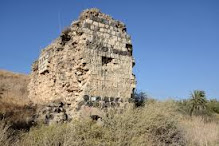Unraveling the mysterious past: a look at the archaeological site of Ubeidiya
Located in the fertile crescent of the Jordan Valley, the archaeological complex of Ubeidiya is a testament to humanity's deep connection with the natural world. This fascinating place has yielded many outstanding discoveries, offering tantalizing glimpses into the lives of our ancient ancestors and the diverse fauna that once roamed the region.
A journey through time: uncovering the layers of history
Excavations at Ubeidiya have revealed a fascinating saga that spans more than 200,000 years and spans the Middle Paleolithic, Upper Paleolithic and Epipaleolithic periods. This remarkable chronology provides a window into the ever-evolving cultural and technological achievements of our ancestors, from the master flint craftsmen of the Middle Paleolithic to the innovative toolmakers of the Epipaleolithic.
A paradise for extinct megafauna
One of the most fascinating aspects of the Ubeidiya site is its treasure trove of paleontological remains. This remarkable collection contains the bones of long-extinct creatures that once roamed the Earth, such as the colossal mammoth and the impressive saber-toothed tiger. These finds provide invaluable clues about the ecology and environment of the region during these past eras.
African wildlife in an unexpected place
Ubeydia also provided surprising evidence for the existence of African fauna, including giraffes and hippopotamuses. These discoveries challenge conventional wisdom about the distribution of animals during the Pleistocene epoch and raise intriguing questions about past migration patterns and interspecies interactions.
Excavations of the oldest traces of the presence of hominids
Perhaps the most significant discovery at Ubaydiya is the presence of hominin remains, including some of the earliest evidence of Homo sapiens outside of Africa. These remarkable findings have profound implications for understanding the origin and distribution of our own species.
Experts' views: archaeologists shed light on the mysteries of Ubaydiya
Archaeologists have painstakingly studied the Ubaydiya site for decades, and their combined findings paint a vivid picture of life in this ancient region. Their careful excavations and analyzes have yielded a wealth of information about the technological capabilities, subsistence strategies, and social structures of our ancestors.
Conclusion: a way to understand our past
The archaeological excavations of Ubeidiya are a testament to the enduring power of human curiosity and the limitless wonders that lie beneath our feet. As we continue to explore and unravel the mysteries of this fascinating place, we gain a deeper understanding of our place in the great tapestry of life and the profound impact we have made on the planet we call home.




Comments
Post a Comment